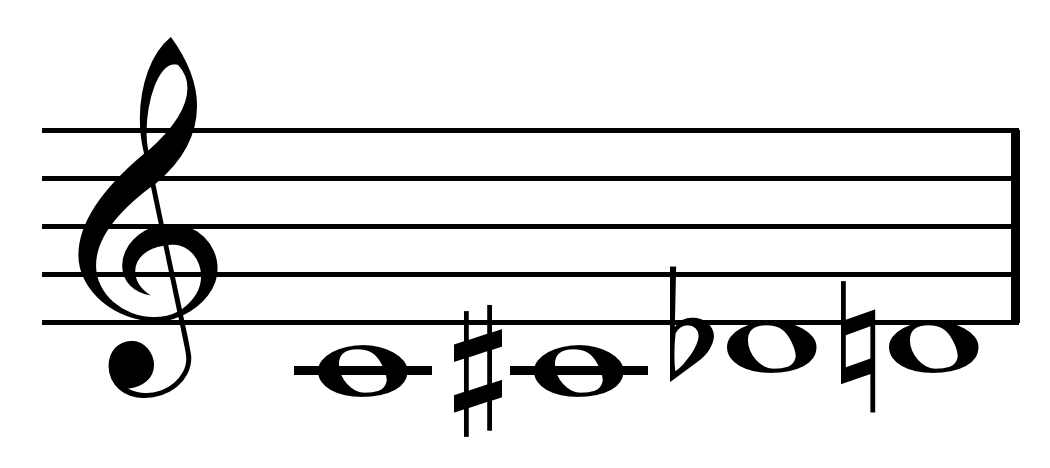Use the commands in this submenu to control the chromatic spelling of your music when you enter notes using MIDI (such as Speedy Entry with MIDI or HyperScribe) or use one of Finale's retranscription commands (Import MIDI File, Retranscribe, utilities like Implode Music, Explode Music, and Respell Notes). You can also edit enharmonic spelling tables for major and minor keys, and for modal or chromatic spelling created in the Nonstandard Key Signature dialog box. Selections made here also affect documents without key signatures (see Keyless scores).
Enharmonic Mac Os X
Noteman says: As you use Finale’s enharmonic spelling methods, remember that enharmonic spelling applies only to non-diatonic notes (notes that are outside of the scale). Finale uses the key signature to spell notes that are within a scale.
To determine how to spell diatonic notes (the unaltered pitches within the scale) entered in your music, Finale always uses the key signature. As an example, if the key signature is G major and you play F sharp, it will always be notated as F sharp, not as G flat. When you chromatically alter a note, Finale uses the enharmonic spelling method selected to determine how to notate it. For instance, in the key of C, the half-step between C and D may be notated as C sharp or D flat depending on your enharmonic spelling selection.
The world's best-selling music notation software. Sibelius is the easy way to write, refine, hear, scan and print beautiful scores. ミュージカル『アラジン』のオフィシャルウェブサイト。 公演情報やチケット予約はこちらから。ストーリーや舞台写真、最新プロモーションvtrなどの作品情報も紹介しています。. There's also an 'enharmonic' (split keys) fat keyboard and even a new lefthanded fretboard. Compatibility with the latest systems. Practica Musica 6 is compatible with Windows XP, Vista, Windows 7 and Windows 8; Mac OS 10.4 or later (Intel or PPC). In modern music and notation, an enharmonic equivalent is a note (enharmonic tone), interval (enharmonic interval), or key signature which is equivalent to some other note, interval, or key signature, but 'spelled', or named, differently. Thus, the enharmonic spelling of a written note, interval or chord is an enharmonic equivalent to the way that note, interval or chord would be written under. 790 8 8 silver badges. Gitg is a great tool for Linux, similar to Gitx for OS X. Just run 'gitg' on the command line from somewhere inside your.
Enharmonic Spelling is a program option. In other words, the option you choose applies to all open documents you work with until you change it. Finale saves you enharmonic spelling settings with your other preferences in your Finale Preferences file. You should also note that Finale doesn’t use enharmonic spelling when you enter notes with Simple Entry or Speedy Entry without MIDI. These are the only two note entry methods where you can enter the exact pitch, including any alteration by raising or lowering the pitch).
- Use Default Spelling. Choose this option to use Finale's automatic spelling. The spelling method is used during MIDI note entry and retranscription. Finale's default spelling offers some advantages, such as a limited ability to spell ascending or descending chromatic lines. This method is also capable of clearly representing tone clusters and chords containing close intervals. Using Speedy Entry, you may need to select an area using the Selection tool and Respell Notes to take advantage of the spelling differences in ascending and descending chromatic lines.
- Favor Sharps. Choose this option to have Finale show accidentals primarily as sharps (or notes raised by a half-step) in your score.
- Favor Flats. Choose this option to have Finale display accidentals primarily as flats (or notes lowered by a half-step).
- Use Spelling Tables. Choose this option to have Finale spell the altered notes according to the spelling tables that you specify. For detailed information, see the next two options below.
- Edit Major and Minor Key Spellings. Displays the Edit Major and Minor Key Spellings dialog box. This dialog box contains Finale's enharmonic spelling settings for major and minor keys. Modify these settings to your preferred enharmonic spellings for notes that are not part of the diatonic scale. To use these settings, make sure that the 'Use Spelling Tables' option is selected (checked).
- Edit Modal or Chromatic Spellings. Displays the Edit Modal or Chromatic Spellings dialog box. This dialog box contains Finale's enharmonic spelling settings for chromatic scales and modes. Modify these settings to your preferred enharmonic spellings. These settings only affect the non-major or minor key signatures that you create in the Nonstandard Key Signature dialog box. To use these settings, make sure that the 'Use Spelling Tables' option is selected (checked).
Leave feedback on this topic
Finale 2014 for
Copyright and trademarks
7007 Winchester Circle, Suite 140
Enharmonic Mac Os Catalina

Boulder, CO 80301
Enharmonic Mac Os Update
Leave feedback on this topic
Finale 2014 for
7007 Winchester Circle, Suite 140
Boulder, CO 80301